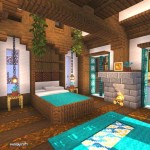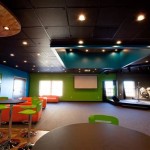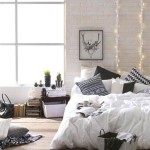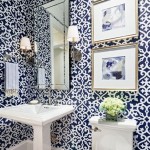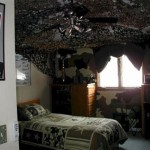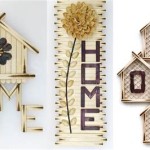Yellow and Grey Interior Decorating Ideas
The combination of yellow and grey in interior design presents a versatile and visually appealing aesthetic. This pairing offers a balance between the vibrancy of yellow and the neutrality of grey, allowing for a wide range of design possibilities, from minimalist and modern to cozy and traditional. The success of a yellow and grey color scheme relies on understanding the nuances of each color and how they interact with each other within a given space.
Grey, acting as a neutral foundation, provides a calming backdrop that allows yellow to take center stage without overwhelming the room. The specific shade of grey used is crucial; lighter greys, like dove grey or silver grey, contribute to an airy and spacious feel, while darker greys, such as charcoal or slate, create a more dramatic and intimate atmosphere. Yellow, known for its association with sunshine, energy, and optimism, introduces warmth and cheerfulness. However, the intensity of yellow must be carefully considered. A bright, saturated yellow can be invigorating but may also be overpowering if used excessively, while pastel or muted yellows offer a softer and more subtle effect.
The application of yellow and grey extends to various elements within a room, including wall colors, furniture, textiles, and accessories. Strategically incorporating these colors can transform the overall mood and style of a space. The interplay of light and shadow is also a significant factor. The way natural and artificial light interacts with the colors can dramatically alter their appearance and impact.
Achieving Balance and Harmony
Maintaining balance is paramount when implementing a yellow and grey color scheme. An imbalance can lead to a space that feels either too cold and sterile or too overwhelming and chaotic. A common approach is to designate grey as the dominant color, using it for larger surfaces like walls and flooring, and then introduce yellow through accents such as throw pillows, artwork, or statement furniture pieces. This strategy allows yellow to add pops of color without dominating the overall aesthetic. Conversely, using yellow as the primary color requires careful consideration of the shade and saturation, often pairing it with lighter greys to prevent the room from feeling too visually heavy.
Another technique for achieving balance involves layering different shades of both yellow and grey. This approach adds depth and complexity to the design, preventing it from feeling flat or one-dimensional. For example, a room might feature walls painted in a light grey, complemented by furniture in a darker charcoal grey and accents in varying shades of yellow, from a pale lemon to a deeper mustard. This layering effect creates visual interest and ensures that the colors work together harmoniously.
Furthermore, the proportion of yellow to grey should be carefully considered based on the size and function of the room. In smaller rooms, it is generally advisable to use a greater proportion of grey to avoid overwhelming the space. In larger rooms, a more even balance between the two colors may be appropriate. The amount of natural light available is also a key factor. Rooms with ample natural light can typically handle brighter and more saturated yellows, while rooms with limited natural light may benefit from softer, more muted shades.
Selecting the Right Shades of Yellow and Grey
The specific shades of yellow and grey chosen will significantly impact the overall mood and style of the room. The color palette should align with the desired aesthetic and the function of the space. For instance, a living room designed for relaxation and comfort might benefit from warmer, softer yellows and greys, while a home office intended for productivity and focus may call for cooler, more energizing shades.
Consider the undertones of both the yellow and grey. Some greys have cool, blue undertones, while others have warmer, beige undertones. Similarly, yellows can range from cool, citrusy tones to warm, golden hues. Matching the undertones of the two colors will ensure that they complement each other rather than clash. Using sample paint swatches and testing them in the room under different lighting conditions is essential to accurately assess the colors’ appearance.
Popular grey shades include:
- Light Grey: Versatile and airy, suitable for creating a bright and spacious feel.
- Dove Grey: A soft and calming grey with a hint of warmth.
- Charcoal Grey: A sophisticated and dramatic grey, ideal for creating a cozy and intimate atmosphere.
- Greige: A blend of grey and beige, offering a warmer and more neutral option.
Popular yellow shades include:
- Pastel Yellow: Soft and subtle, perfect for creating a gentle and inviting space.
- Lemon Yellow: A vibrant and refreshing yellow, ideal for adding a pop of energy.
- Mustard Yellow: A rich and earthy yellow, suitable for creating a warm and sophisticated feel.
- Golden Yellow: A warm and inviting yellow, reminiscent of sunshine and optimism.
Experimenting with different combinations of these shades is crucial to finding the perfect pairing for a given space. Consider creating a mood board with fabric swatches, paint samples, and images of furniture and accessories to visualize the overall design concept.
Incorporating Textures and Materials
The textures and materials used in conjunction with yellow and grey can further enhance the design and create a more visually compelling space. Incorporating a variety of textures adds depth and interest, preventing the room from feeling flat or monotonous. The selection of materials should complement the overall style and function of the room.
For example, pairing a smooth, matte grey wall with a textured yellow throw pillow adds a tactile element to the design. Similarly, incorporating natural materials like wood and wool can create a warm and inviting atmosphere. Consider using a grey wool rug to ground the space and then adding yellow accents through natural linen cushions and wooden furniture details.
Metal accents, such as brass or copper, can also complement a yellow and grey color scheme. These metallic tones add a touch of glamour and sophistication, particularly when paired with darker greys and richer yellows. For instance, brass light fixtures or copper hardware can create a focal point and enhance the overall aesthetic.
Furthermore, the use of patterned textiles can add visual interest and break up large blocks of color. Geometric patterns, floral prints, or abstract designs incorporating yellow and grey can be used in curtains, rugs, or upholstery to create a dynamic and engaging space. The scale and complexity of the pattern should be carefully considered to avoid overwhelming the room. In smaller rooms, smaller-scale patterns are generally more appropriate, while larger rooms can handle bolder and more intricate designs.
The interplay of light and shadow on different textures and materials can also significantly impact the overall design. For example, a textured wall painted in a light grey will reflect light differently depending on the angle, creating a dynamic and visually appealing effect. Similarly, a plush yellow rug will absorb light and create a sense of warmth and comfort. Understanding how light interacts with different surfaces is crucial for creating a well-balanced and visually harmonious space.

Gray And Yellow Living Rooms Photos Ideas Inspirations Grey Walls Room

75 Beautiful Grey And Yellow Living Room Ideas Designs November 2025 Houzz

Gray And Yellow In The Living Room A Dash Of Elegant Sophistication Grey

Gray And Yellow Living Rooms Photos Ideas Inspirations

25 Trending Grey And Yellow Home Decor Ideas Digsdigs

Gray And Yellow Living Rooms Photos Ideas Inspirations

10 Grey Yellow Bedroom Ideas Stuart Graham Fabrics

Yellow Living Room Designs For Your Home Design Cafe

41 Stylish Grey And Yellow Living Room Décor Ideas Digsdigs

Decorating With Yellow And Gray 20 Spaces We Love Grey Living Room Dining

